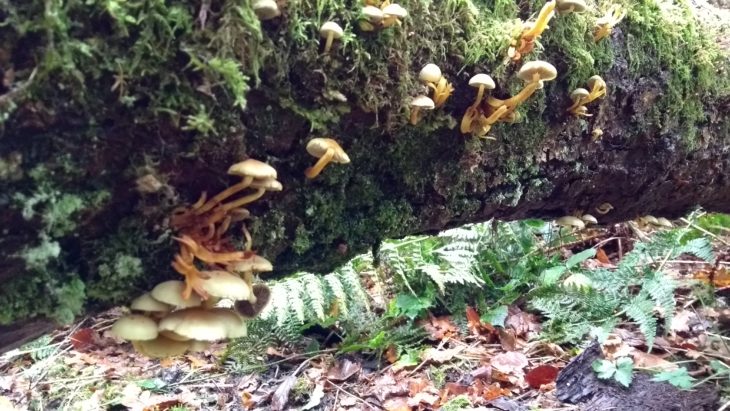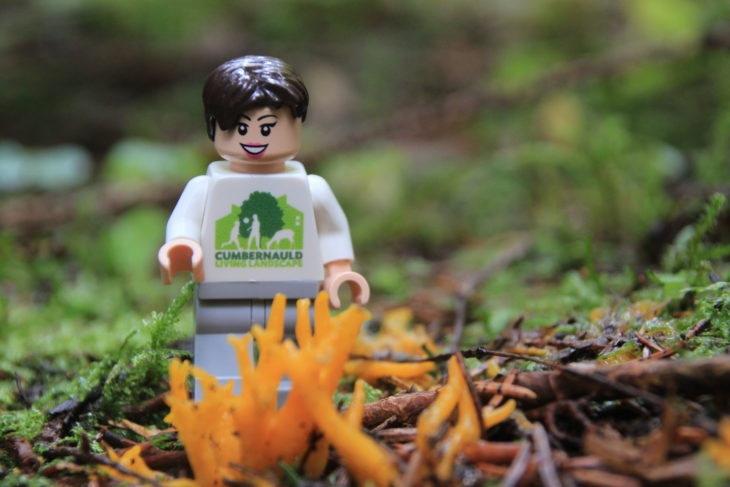Fantastic Fungi
,

While out with the Wild Ways Well group this Thursday we were lucky enough to come across some amazing fungi in the Scottish Wildlife Trust’s Seafar Wood Wildlife Reserve. Each one was the size of a pinhead, and they ranged in colour from brilliant orange to vivid green.
Fungi are fascinating, belonging to a Kingdom of Life all of their own. Unlike plants they can’t make their own food from sunlight, instead they have to obtain their nutrients from the environment around them.
Many types of fungi feast on dead wood. These are the only organisms that are able to break down the structure of wood. Just imagine if wood never rotted, we’d quickly be up to our necks in fallen trees!

Fungi is around us all the time, from the microscopically small to the very large. One honey fungus growing in Oregon is believed to be an incredible 2.4 miles across, making it the largest organism on Earth.
They are important to humans too, without them we couldn’t have bread, wine, beer or pizza bases. But they can also be deadly. Hundreds of people are seriously harmed every year from eating toxic mushrooms. It can be hard to tell safe and toxic fungi apart, so if you’re ever in doubt please don’t touch.
But above all else, many fungi are just beautiful. Coming in all the colours of the rainbow, they lend a vibrant note to drab winter woodlands. They are great subjects for photography or sketching, or even just taking a moment to stop and admire when out a walk in Cumbernauld’s woodlands.

Let us know if you’ve seen any fabulous fungi on the Cumbernauld Living Landscape Facebook page.

